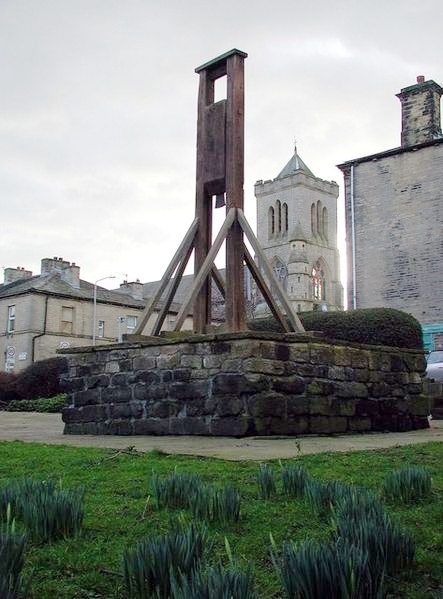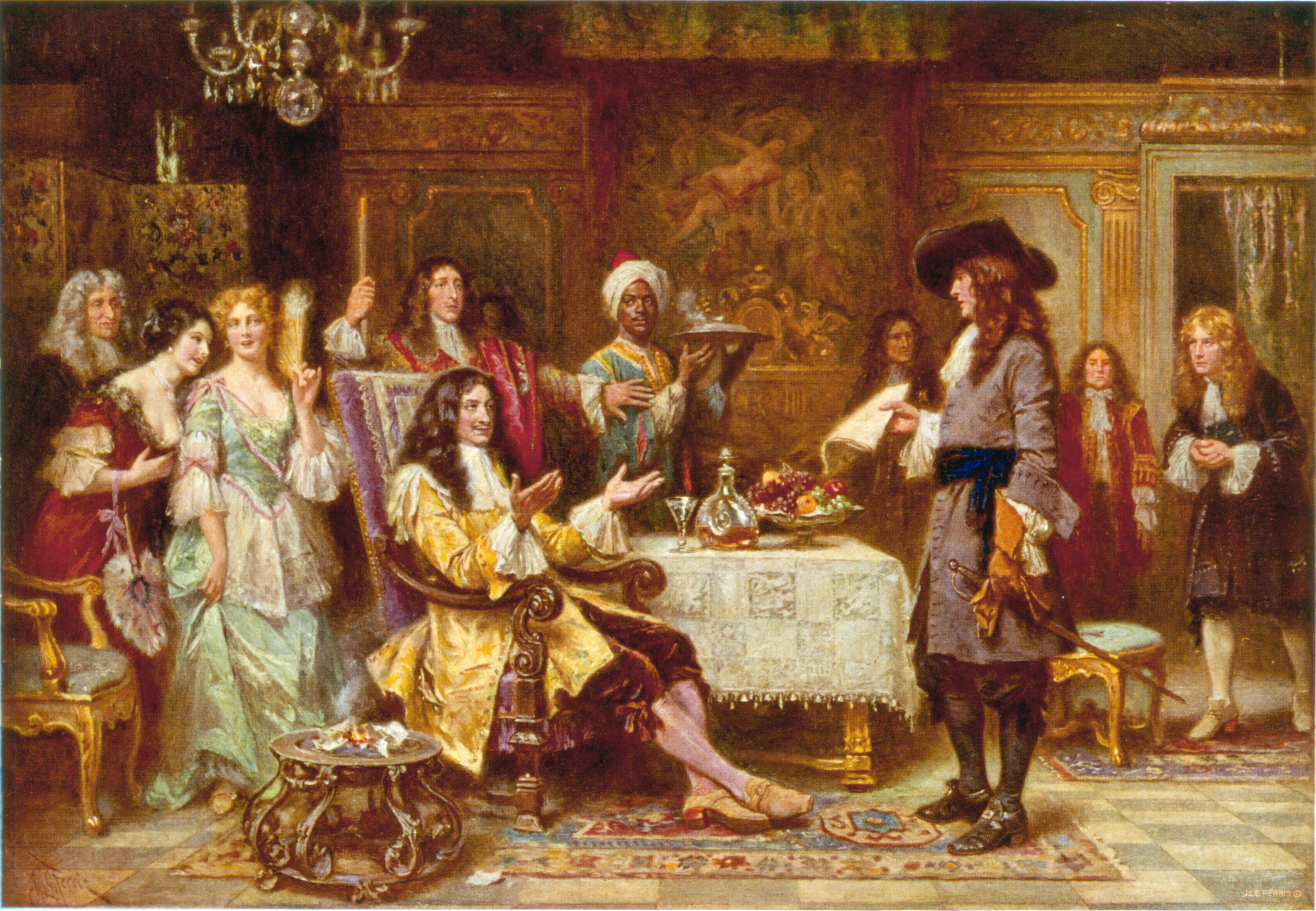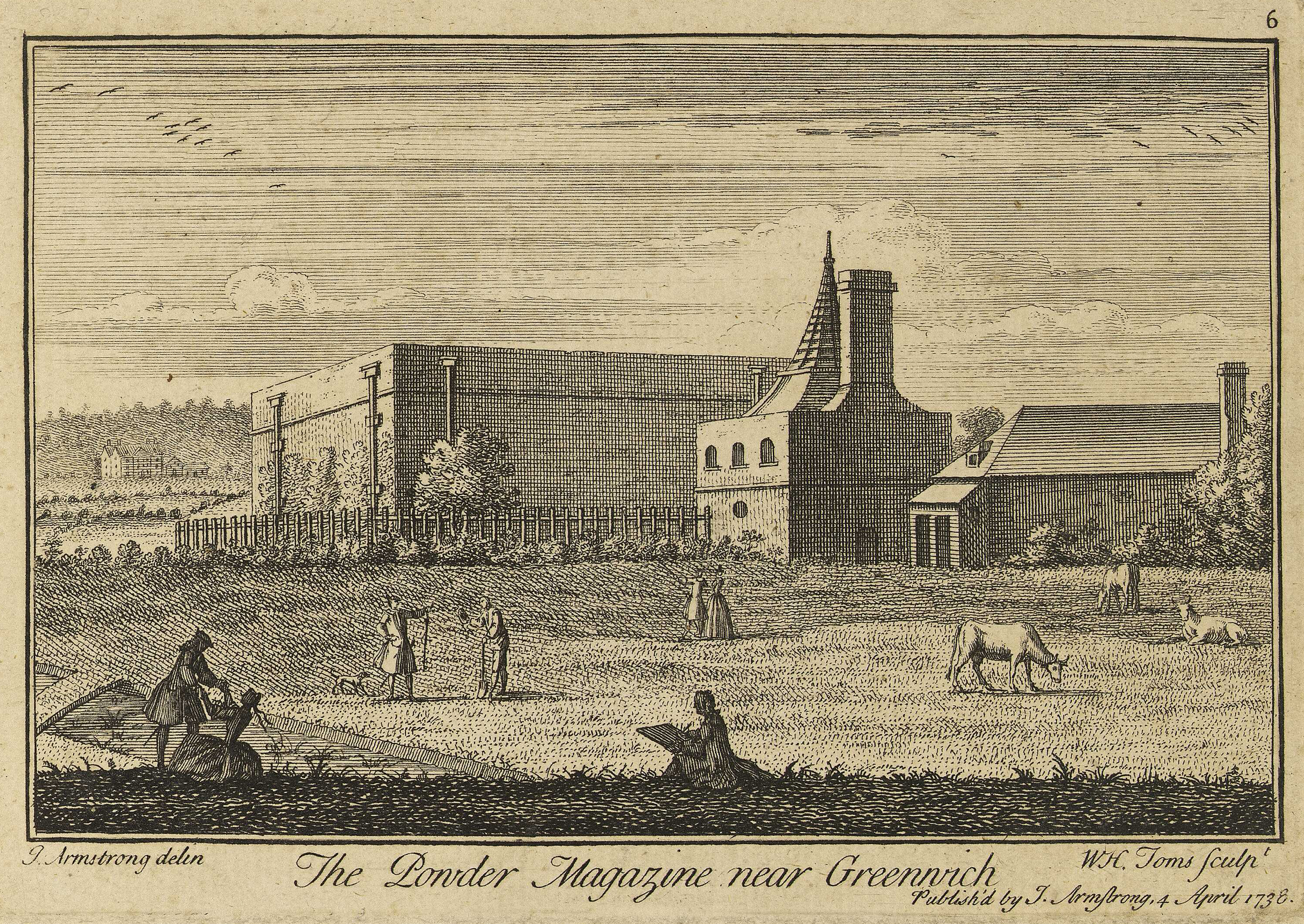|
Gibbeting
Gibbeting is the use of a gallows-type structure from which the dead or dying bodies of criminals were hanged on public display to deter other existing or potential criminals. Occasionally, the gibbet () was also used as a method of public execution, with the criminal being left to die of exposure, thirst and/or starvation. The practice of placing a criminal on display within a gibbet is also called "hanging in chains". Display Gibbeting was a common law punishment, which a judge could impose in addition to execution. As a sentence for murder, this practice was codified in England by the Murder Act 1751. It was most often used for traitors, robbers, murderers, highwaymen, and pirates and was intended to discourage others from committing similar offenses. The structures were therefore often placed next to public highways (frequently at crossroads) and waterways. Exhibiting a body could backfire against a monarch, especially if the monarch was unpopular. The rebels Hen ... [...More Info...] [...Related Items...] OR: [Wikipedia] [Google] [Baidu] |
William Kidd
William Kidd (c. 1645 – 23 May 1701), also known as Captain William Kidd or simply Captain Kidd, was a Scottish-American privateer. Conflicting accounts exist regarding his early life, but he was likely born in Dundee and later settled in New York City. By 1690, Kidd had become a highly successful privateer, commissioned to protect English interests in the Thirteen Colonies in North America and the West Indies. In 1695, Kidd received a royal commission from the Earl of Bellomont, the governor of New York, Massachusetts Bay and New Hampshire, to hunt down pirates and enemy French ships in the Indian Ocean. He received a letter of marque and set sail on a new ship, '' Adventure Galley'', the following year. On his voyage he failed to find many targets, lost much of his crew and faced threats of mutiny. In 1698, Kidd captured his greatest prize, the 400-ton '' Quedagh Merchant'', a ship hired by Armenian merchants and captained by an Englishman. The political climate in Eng ... [...More Info...] [...Related Items...] OR: [Wikipedia] [Google] [Baidu] |
Execution Dock
Execution Dock was a site on the River Thames near the shoreline at Wapping, London, that was used for more than 400 years to Execution (legal), execute Pirate, pirates, smugglers and mutiny, mutineers who had been sentenced to death by Admiralty courts. The "dock" consisted of a Gallows, scaffold for hanging. The last executions at this site were in 1830. History The British Admiralty's legal jurisdiction was for all crimes committed at sea. The dock symbolised that jurisdiction by being located just beyond the low-tide mark in the river. Anybody who had committed crimes on the seas, either in home waters or abroad, would eventually be brought back to London and tried by the Admiralty court, High Court of the Admiralty. Capital punishment was applied to acts of mutiny that resulted in death, for murders on the High Seas, and specific violations of the Articles of War governing the behaviour of naval sailors, including sodomy. Those sentenced to death were usually brought to ... [...More Info...] [...Related Items...] OR: [Wikipedia] [Google] [Baidu] |
Halifax Gibbet
The Halifax Gibbet was an early guillotine used in the town of Halifax, West Yorkshire, England. Estimated to have been installed during the 16th century, it was used as an alternative to beheading by axe or sword. Halifax was once part of the Manor of Wakefield, where ancient custom and law gave the Lord of the Manor the authority to execute summarily by decapitation any thief caught with stolen goods to the value of 13 d or more (), or who confessed to having stolen goods of at least that value. Decapitation was a fairly common method of execution in England, but Halifax was unusual in two respects: it employed a guillotine-like machine that appears to have been unique in the country, and it continued to decapitate petty criminals until the mid-17th century. The device consisted of an axe head fitted to the base of a heavy wooden block that ran in grooves between two uprights, mounted on a stone base about high. A rope attached to the block ran over a pulley, allowing ... [...More Info...] [...Related Items...] OR: [Wikipedia] [Google] [Baidu] |
Samuel Pepys
Samuel Pepys ( ; 23 February 1633 – 26 May 1703) was an English writer and Tories (British political party), Tory politician. He served as an official in the Navy Board and Member of Parliament (England), Member of Parliament, but is most remembered today for the diary he kept for almost a decade. Though he had no Maritime pilot, maritime experience, Pepys rose to be the Chief Secretary to the Admiralty under both Charles II of England, Charles II and James II of England, James II through patronage, diligence, and his talent for administration. His influence and reforms at the Admiralty (United Kingdom), English Admiralty were important in the early professionalisation of the Royal Navy. The detailed private diary that Pepys kept from 1660 until 1669 was first published in the 19th century and is one of the most important primary sources of the Stuart Restoration. It provides a combination of personal revelation and eyewitness accounts of great events, such as the Grea ... [...More Info...] [...Related Items...] OR: [Wikipedia] [Google] [Baidu] |
Philadelphia
Philadelphia ( ), colloquially referred to as Philly, is the List of municipalities in Pennsylvania, most populous city in the U.S. state of Pennsylvania and the List of United States cities by population, sixth-most populous city in the United States, with a population of 1,603,797 in the 2020 United States census, 2020 census. The city is the urban core of the Philadelphia metropolitan area (sometimes called the Delaware Valley), the nation's Metropolitan statistical area, seventh-largest metropolitan area and ninth-largest combined statistical area with 6.245 million residents and 7.379 million residents, respectively. Philadelphia was founded in 1682 by William Penn, an English Americans, English Quakers, Quaker and advocate of Freedom of religion, religious freedom, and served as the capital of the Colonial history of the United States, colonial era Province of Pennsylvania. It then played a historic and vital role during the American Revolution and American Revolutionary ... [...More Info...] [...Related Items...] OR: [Wikipedia] [Google] [Baidu] |
Atwater Kent Museum Of Philadelphia
The Philadelphia History Museum was a public history museum located in Center City, Philadelphia from 1938 until 2018. From 1938 until 2010, the museum was known as the Atwater Kent Museum. The museum occupied architect John Haviland's landmark Greek Revival structure built in 1824–1826 for the Franklin Institute. The Museum operated as a city agency as part of Philadelphia's Department of Recreation. The building was listed on the National Register of Historic Places on August 1, 1979. History The museum was established through the efforts of Philadelphia Mayor S. Davis Wilson, Frances Wistar, president of the Philadelphia Society for the Preservation of Landmarks, and A. Atwater Kent, radio pioneer and inventor. In 1938 Kent purchased the former Franklin Institute building, which the Institute had vacated in 1933,, p.36 and gifted the building to the city for use as a public history museum. Following renovations carried out by the Works Progress Administration, the Museum ... [...More Info...] [...Related Items...] OR: [Wikipedia] [Google] [Baidu] |
Human Skull
The skull, or cranium, is typically a bony enclosure around the brain of a vertebrate. In some fish, and amphibians, the skull is of cartilage. The skull is at the head end of the vertebrate. In the human, the skull comprises two prominent parts: the neurocranium and the facial skeleton, which evolved from the first pharyngeal arch. The skull forms the frontmost portion of the axial skeleton and is a product of cephalization and vesicular enlargement of the brain, with several special senses structures such as the eyes, ears, nose, tongue and, in fish, specialized tactile organs such as barbels near the mouth. The skull is composed of three types of bone: cranial bones, facial bones and ossicles, which is made up of a number of fused flat and irregular bones. The cranial bones are joined at firm fibrous junctions called sutures and contains many foramina, fossae, processes, and sinuses. In zoology, the openings in the skull are called fenestrae, the ... [...More Info...] [...Related Items...] OR: [Wikipedia] [Google] [Baidu] |
Rye, East Sussex
Rye is a town and civil parish in the Rother District, Rother district of East Sussex, England, from the sea at the confluence of three rivers: the River Rother (Eastern), Rother, the River Tillingham, Tillingham and the River Brede, Brede. An important member of the mediaeval Cinque Ports confederation, it was at the head of an embayment of the English Channel, and almost entirely surrounded by the sea. At the 2011 census, Rye had a population of 4,773. Its historical association with the sea has included providing ships for the service of the Crown in time of war, and being involved in smuggling. The notorious Hawkhurst Gang used its ancient inns The Mermaid Inn and The Olde Bell (Rye), The Olde Bell Inn, which are said to be connected to each other by a secret passageway. Those historic roots and its charm make it a tourist destination, with hotels, guest houses, B&Bs, tea rooms, and restaurants. Rye has a small fishing fleet, and Rye Harbour has facilities for yachts and ot ... [...More Info...] [...Related Items...] OR: [Wikipedia] [Google] [Baidu] |
Greenwich Peninsula
The Greenwich Peninsula is an area of Greenwich in South London, South East London, England. It is bounded on three sides by a loop of the River Thames, Thames, between the Isle of Dogs to the west and Silvertown to the east. To the south is the rest of Greenwich, to the south-east is Charlton, London, Charlton. Formerly known as Greenwich MarshesOS 1:2500 map of 1867, Republished as ''West India Docks 1867'', The Godfrey Edition, Alan Godfrey Maps, 1991, Gateshead, and as Bugsby's Marshes, it became known as East Greenwich as it developed in the 19th century, but more recently has been called North Greenwich due to the location of the North Greenwich tube station, North Greenwich Underground station (not to be confused with North Greenwich, Isle of Dogs, North Greenwich on the Isle of Dogs, at the north side of a former ferry from Greenwich). The peninsula's northernmost point on the riverside is known as ''Blackwall Point'', and this may have led to the name ''Blackwall Peninsu ... [...More Info...] [...Related Items...] OR: [Wikipedia] [Google] [Baidu] |
Cuckold's Point
Cuckold's Point, also Cuckold's Haven, is part of a sharp bend on the River Thames on the Rotherhithe peninsula, south-east London, opposite the West India Docks and to the north of Columbia Wharf. The name is associated with a post (which may have been a maypole) surmounted by a pair of horns that used to stand at the location, a symbol commemorating the starting point of the riotous Horn Fair, which can also symbolise a cuckold. History The Horn Fair was a procession which led to Charlton. It is said that King John, or another English monarch, gave the fair as a concession, along with all the land from the point to Charlton, to a miller whose wife he had seduced after a hunting trip, though this story is disputed. Cuckold's Haven is first mentioned in writing on 15 May 1562, in ''The Diary of Henry Machyn, Citizen and Merchant-Taylor of London''; the entry reads "Was set up at the cuckold haven a great May-pole by butchers and fisher-men, full of horns; and they made g ... [...More Info...] [...Related Items...] OR: [Wikipedia] [Google] [Baidu] |








